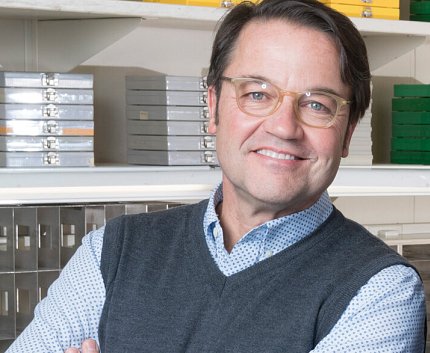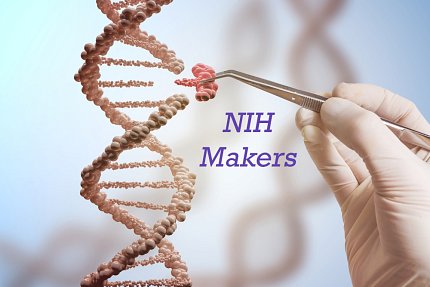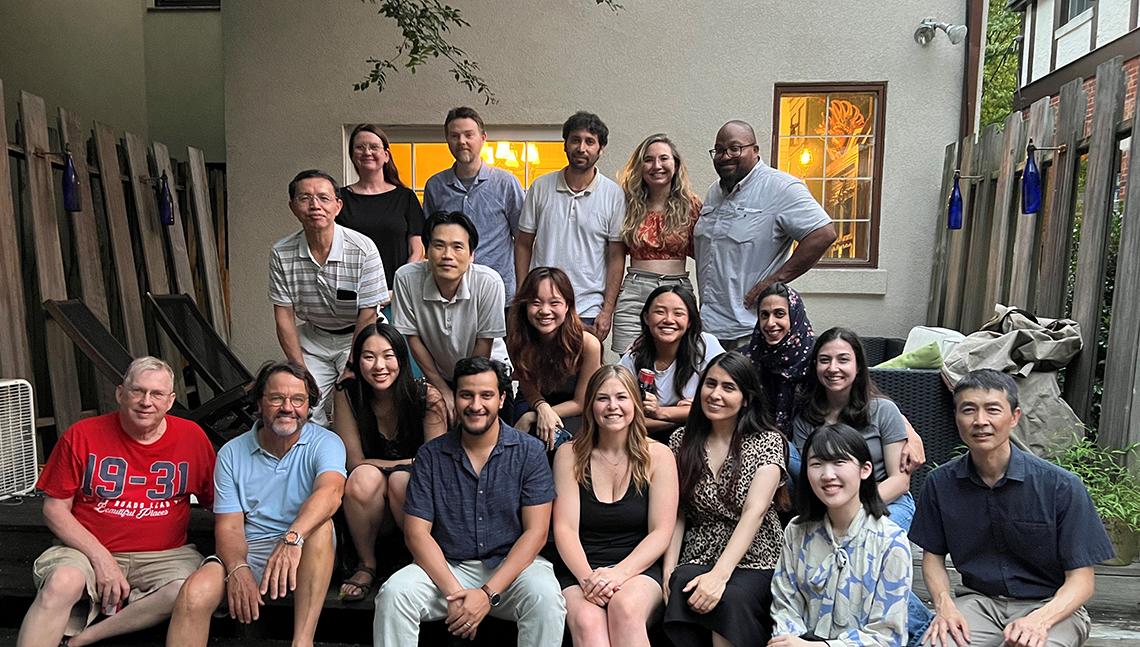Hijacking a Process
Tisdale Develops New Options for Treating SCD

Photo: Discovery
People with sickle cell disease (SCD) commonly describe the pain as feeling as though shards of glass are moving through their veins. About 100,000 Americans live with this debilitating disease; millions are afflicted worldwide.
When Dr. John Tisdale arrived at NIH 30 years ago, there was no specific treatment for SCD. He felt compelled to change that.
“I’ve been interested in sickle cell disease for a very long time, since the early 1990s, when I found myself on the wards in internal medicine training taking care of patients, with nothing to give them,” he recounted.
SCD is the most common single-gene inherited blood disorder in the world. It results from a misspelled beta globin that makes red blood cells rigid and misshapen, which obstructs circulation. When the red blood cells get stuck, areas just beyond are not getting oxygen.
“It can cause severe pain in muscles and bones and also causes organ damage from head to toe from these repeated episodes,” said Tisdale, senior investigator in the Cellular and Molecular Therapeutics Branch of the National Heart, Lung and Blood Institute (NHLBI).
Early Days in the Blood Factory

Photo: vchal/shutterstock
There is a cure for SCD. It was inadvertently discovered in the 1980s when a child received a bone marrow transplant intended to treat leukemia. By replacing the bone marrow, which produces blood cells, the transplant also cured the patient’s SCD.
Back then, massive doses of chemotherapy were required prior to transplant. In adults, Tisdale noted, “the disease has ravaged their organs and made them ineligible for that kind of a transplant.”
That spurred Tisdale’s team to research whether such a transplant from a matched sibling could work without chemotherapy. Could they outsmart the immune system into accepting the graft using a combination of patient and donor bone marrow? Could the new, healthy red blood cells overtake and replace the sickled cells?
“It worked! That was our first success, where we could transplant adults with a chemotherapy-free transplant regimen,” said Tisdale.
But only a small percentage of patients would be eligible. Most SCD patients don’t have a fully matched sibling donor who also doesn’t have the disease.
Toward a Gene Therapy

All along, Tisdale’s team was also exploring another type of transplant: gene therapy. Instead of relying on a donor, the bone marrow would be engineered from the patient. Their vision was to extract the patient’s marrow and use viral vectors to insert the modified gene into the marrow’s stem cells.
“That way,” explained Tisdale, “if we hijacked this virus and put the gene in, that’s correctly spelled, we can take the patient’s bone marrow, put it into culture in the flask, squirt this vector in, have it stick its DNA into those cells, and then give them back to the patient.”
Tisdale recalled conducting such experiments in mice when he first arrived at NIH in 1994 as an NHLBI hematology fellow. The experiments worked in mice but later not in people. The first in-human studies showed gene transfer among the blood cells, but at insufficient levels.
“So we had to work for many years trying to fix the way we make the vectors, the way we cultured the cells, the way we get the patient ready to receive the cells,” he said.
Newly Approved Therapy
In December 2023, the Food and Drug Administration (FDA) approved two cell-based gene therapies for SCD in patients ages 12 and older. The approval came after Tisdale’s team submitted results from their clinical trial launched 10 years earlier.
In the study, researchers developed a viral vector, the principal component coming from inactivated HIV, to deliver the gene therapy.
“The first patients had some benefit,” Tisdale said. “Their hemoglobin went up. They had fewer pain events. But they still had disease.”
They then discovered it was much more efficient getting bone marrow seeds from the blood than directly from the bone marrow. “That gave us a lot more cells to work with,” he noted.
Tisdale’s team kept honing the process. They became more efficient at inserting the gene into the marrow and they optimized the way they prepped patients for the transplant.
“We do require chemotherapy…so the cells that we give, that we fixed, can take over,” he said.
In their final cohort of patients, severe pain events had resolved after the procedure. The treatment results mirrored that of a matched sibling bone marrow transplant, paving the way for FDA approval.
Major Step on Long Path
The gene therapy treatment is no doubt a milestone; it’s also costly and cumbersome.
“Sickle cell is a very expensive disease in general,” Tisdale noted, from managing pain to treating strokes and multiple organ damage. “If you can cure it, or mitigate it, even with an expensive strategy, that should pay for itself.”
New technologies and techniques are in the works to drive down costs.
“Ultimately, our goal is to try to [treat SCD] not in a flask—where we take the cells out…put the gene in, give cells back and support the patient after transplant,” he said. “We’d like to do all of that inside the body, where we use what we know about viral vectors or about genome-editing strategies and put those tools in the patient’s vein, direct them to the bone marrow by tagging that tool that, like a zip code, delivers this editing tool or vector to a specific address.”
He concluded, “We’re hopeful that we can take all of this complicated stuff, put it with an antibody, and just squirt it in the vein.”
Tisdale’s research continues and its potential is vast.
“Now, we can genetically modify bone marrow stem cells and fix the disease,” he said. “It’s a step in the direction of developing this into something that’s more widely applicable.”
